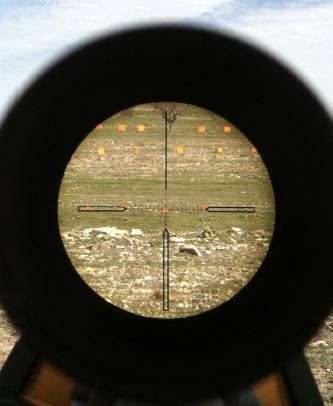
To understand the use of the G7 reticle, you need to first understand the method for compensation that we are using. Generally, we are zeroing our rifles for 200 yards. This allows point blank shooting on deer sized animals out to 250-275 yards. For distances beyond that, we use a laser rangefinder to precisely measure the distance to the target, and we will dial the elevation adjustment to properly compensate for projectile drop. Most of the time, the elevation turret is calibrated for yards to target by developing a ballistic profile of the rifle/cartridge combination. The G7 Ballistic turret combines this convenient yardage calibration with the standard MOA calibration for quick reference, or shooting at distances beyond the yardage calibration.
Once the drop correction has been made, wind doping and correction must be accomplished. We calibrate the horizontal crosshair with precise 1 MOA divisions that allow exact hold for wind. There are 10 MOA provided in each direction for shooting in the toughest conditions. For example, a target is ranged at 700 yards and the wind is blowing 10 mph. The elevation turret is adjusted for 7 (700). The elevation hold in the reticle should be right on. A quick rule of thumb to calculate the amount of wind hold for a hunting caliber goes as follows: a 20 mph wind correction in MOA equals the distance in yards divided by 100. So 700 yards, 20 mph equals approximately 7 MOA correction. A 10 mph wind needs half or 3.5 MOA, and a 5 mph wind would only require 1.75 MOA correction.
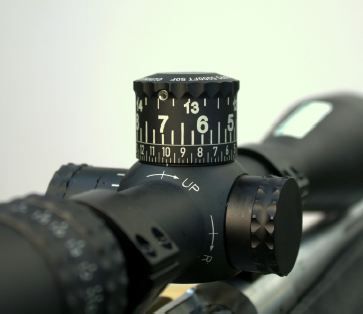
There is an additional compensation method available with the G7 reticle. In some hunting situations, deliberate compensation by dialing is to slow, and requires breaking shooting position. One of my favorite hunts is badland mulies in sagebrush choked coulees. We’ll start from the top, and cruise down a ridgeline. Often, a big buck will blow out from his honey hole in the bottom, and make a run for the top of the next ridge over. You have just a few seconds to drop to a sitting position, make a hold and make a shot.
The G7 reticle offers a simple holdover reticle that provides the drop and wind (or moving target) correction. For the 5.5-22 model, the reticle should subtend correctly at half power (11X), for the 2.5-10X the holdover subtenstions will work at 10X. We have provided a calculator at www.gseven.com that will allow you to put your exact ballistics in and adjust the magnification so that you have the best fit. For example a 300 RUM may be correct on 12X where a 270 Winchester would fit better on 10X. An example for the new 7mm LRM cartridge from Gunwerks is demonstrated. We prefer this magnification range, because at that power, the rifle scope offers very generous field of view to assist in target acquisition and follow through.
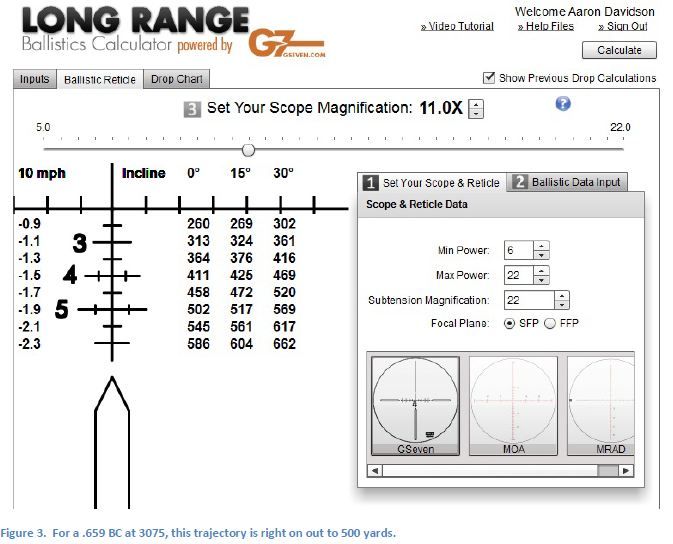
With the preliminaries out of the way, lets consider the dimensions and subtensions of the reticle. The windage marks are spaced exactly 1 MOA apart. There are 9 marks in each direction, with the point on the double line portion serving as the 10 MOA hold if required. Each mark has a specific height or subtension and is tapered like an hour glass so that the top portion is visible while the center section is very fine and will not cover your target when holding over for wind. With the bold ends and varying subtenstion, each line makes a great measurement tool. You can use the full height of the bar, or use only the center to end for a half value measurement. Different tops and bottoms can also be combined for even more options. The first line from center is 1 MOA tall and repeats every other position. It is one MOA tall, the next taller line is 1.5 MOA, then 2, then 2.5, and finally 3 MOA these dimensions are noted in red in Figure 3.
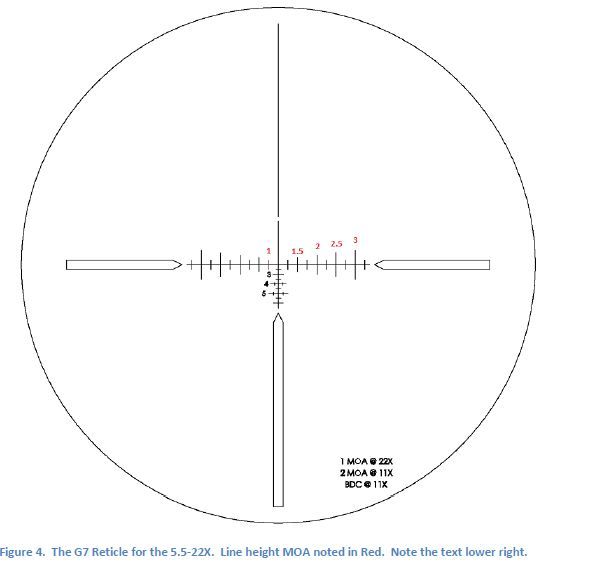
The verticle bars subtend ½ MOA per division at 22X and 1 MOA per division at half power (11X) on the 5.5-22 and 1 MOA per division on 10X for the 2.5-10 model. In addition to providing holdover, these divisions can also be used for measurement and ranging.
The following outlines the basic procedure for reticle ranging:
The equation for determining the range to a target of known height (like the back to brisket dimension of an animal):

An elk has a back to brisket dimension of 30 inches. Using the scope reticle, the same back to brisket dimension is determined to measure (or subtend) 6 MOA. For this example, the elk would be 500 yards
distant.
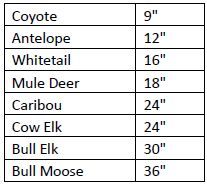
Table 1. Back to Brisket Dimensions
